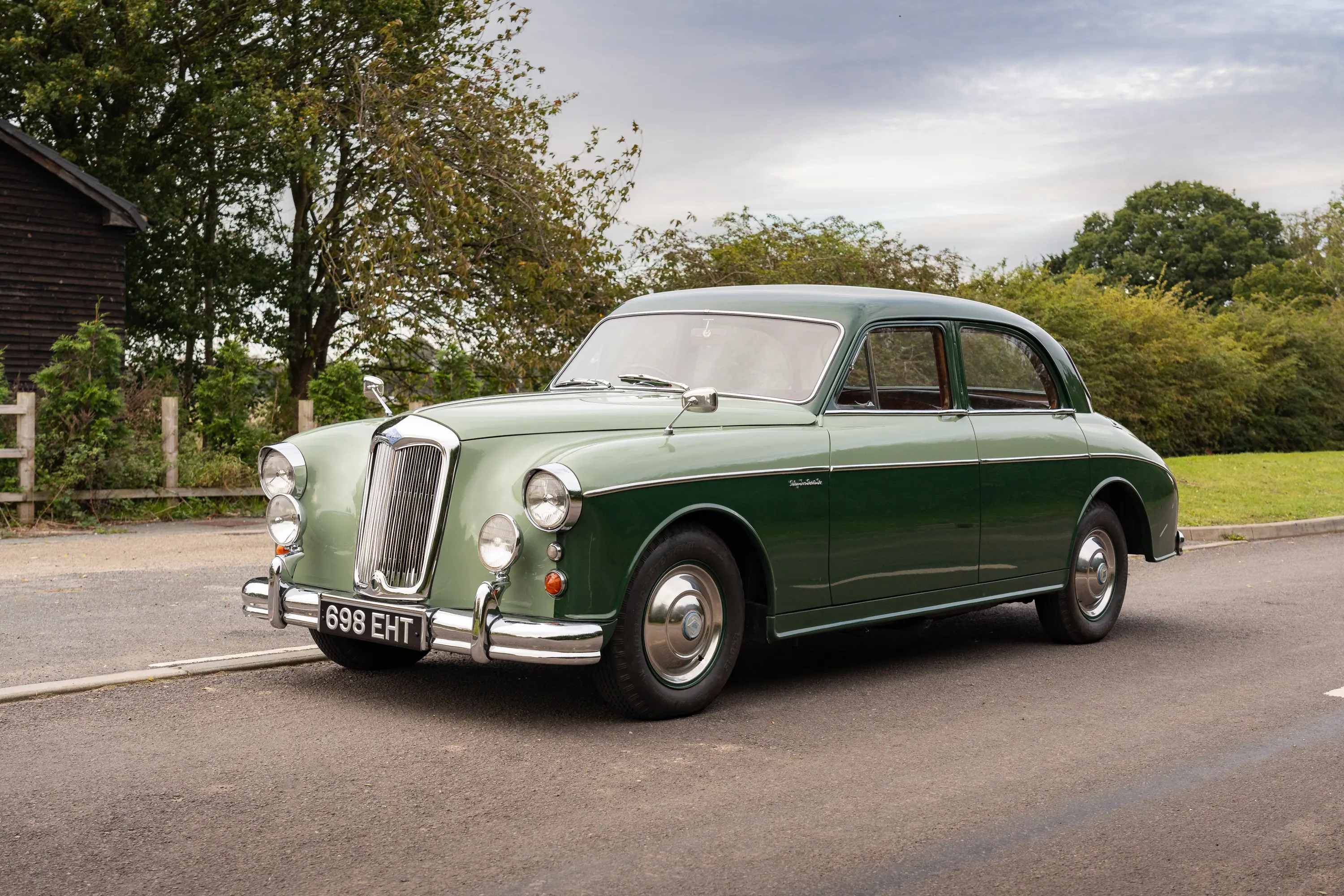A Car of Temptation – A Riley Two-Point-Six
25 October 2023
Auctions can be places of great temptation to the unwary classic car enthusiasts. Take the 1959 Riley Two-Point-Six to be sold by H&H on the 29th November. After just one look, this writer was plotting to eBay several members of his family to raise the necessary funds - 1959 Riley 2.6 Saloon (handh.co.uk).

The Two-Point-Six’s beautiful lines were the work of Gerald Palmer, who once reflected: “I had been to several Continental shows and had realised that some Italian styles were really wonderful. British styling, by comparison, was just pathetic.” In 1949, the Nuffield Group tasked him with devising a new generation of MG, Riley and Wolseley. “There was no product planning, nothing. All I had to do was come up with ideas, which I hoped were accepted. Luckily, they were!”.
The first of the Palmer saloons was the 1952 Wolseley 4/44, followed in 1953 by the MG Magnette ZA and the Riley Pathfinder. Next came the Wolseley 6/90, which debuted at the 1954 London Motor Show. It looked almost identical to the Pathfinder but had a slightly less sleek bodyshell. Unfortunately, too many Riley owners complained about the suspension. Some drivers even found the rod on the rear suspension coming adrift.
1957 saw the end of the Pathfinder after 5,152 units, and its Two-Point-Six replacement caused many aficionados to mutter about “badge engineering”. In essence, it was the Wolseley 6/90 Series III with the diamond logo and a slightly powerful version of the 2.6-litre six-cylinder engine: 101 bhp as opposed to 97 bhp. The days of the Riley ‘Big Four’ unit belonged to the past.
Yet the Two-Point-Six’s detailing – the rev-counter, the headlight hoods, the larger auxiliary lamps, the flashing indicators instead of trafficators, and the duo-tone paint finishes – did give it a different image to its Wolseley stablemate. The 6/90 was for bank managers, solicitors, and Detective-Inspectors in B-movies with such dialogue as “It’s a fair cop guv’nor, and no mistake”. The Riley had a more raffish image – you can imagine Kenneth More from Genevieve driving one for business.
The Two Point Six cost £1,411 7s, and Autosport thought it “just the sort of machine the successful businessman would like to park in front of his house”. One unusual detail, shared with the 6/90 and the Morris Isis Series II, was the floor gear lever mounted to the motorist’s right. Autocar thought, “the great majority of drivers are likely to approve of the gear change mechanism”.
Sales ended in 1959, for there was no Riley version of the Austin A99 Westminster/Wolseley 6-99/Princess 3-Litre ‘Big Farinas’. It was yet another short-sighted decision from the British Motor Corporation, for a Two-Point-Six successor could have evolved into a rival to the Jaguar Mk.2, the Rover P6 and the Triumph 2000.
As it is, the Riley to be auctioned by H&H is a reminder of Palmer’s flair and of a time when the diamond badge belonged to a world of cravats and tennis clubs. And who could disagree with the brochure’s claim, “Through and through, the Riley Two-Point-Six is a luxury car to be proud of”.
With Thanks To: Trusted motorcar & motorcycle auctioneers since 1993 | H&H Classics (handh.co.uk) and Andy Talbot
